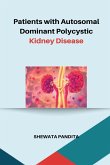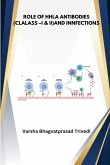Proteins are used as functional ingredients primarily to increase nutritional quality and to provide desirable sensory characteristics such as structure, texture and colour to a number of formulated foods. These are used widely in food industry as these are generally recognized as safe, possess unique functional properties and have a high nutritional value (Chen et al., 2006). Proteins from animal as well as plant sources are used commercially as functional ingredients. Plant proteins are the most abundant source of proteins on earth. These have been classified into three main classes: storage, structural and protective. Storage proteins (present in the highest proportion) are of particular importance for human beings as these can be used as dietary proteins (Vasco- Mendez et al., 1999). Traditionally, legumes, cereals and oilseeds are major sources of plant proteins. Proteins constitute 6 to 40% dry matter of these seeds. Seed proteins can be further classified on the basis of their solubility into albumins (water soluble), globulins (saline soluble), prolamins (alcohol soluble) and glutelins (dilute alkali soluble) (Osborne, 1924). Globulins are the main storage proteins in legumes, while prolamins and glutelins are the major proteins in cereals (Utsumi, 1992; Boulter and Croy, 1997; Kiosseoglou and Paraskevopoulou, 2011).








